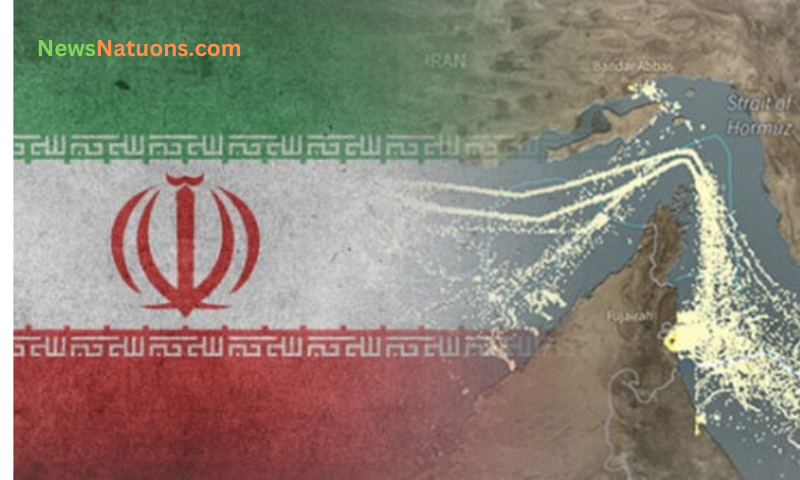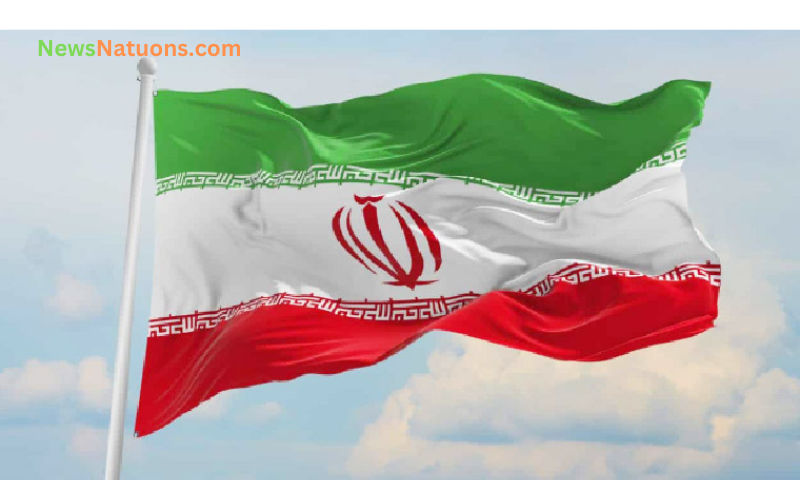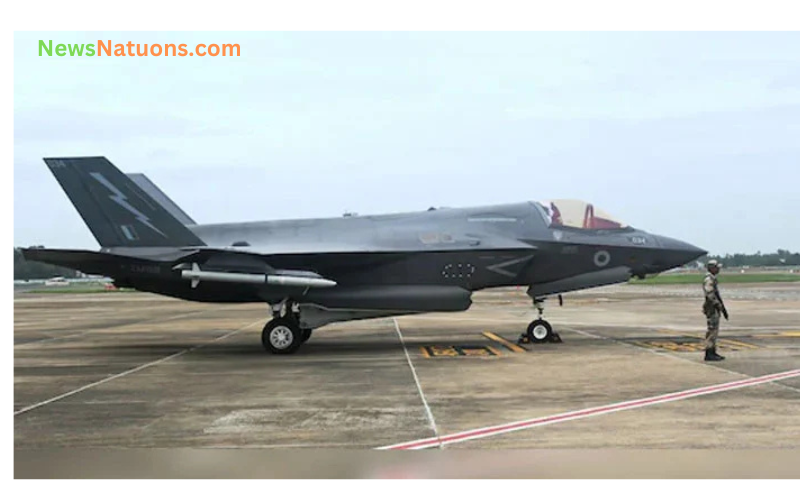According to a U.S. intelligence report, Iran made preparations to mine the Strait of Hormuz last month, following Israeli strikes on its territory, as revealed by two U.S. officials cited by Reuters on July 2, 2025. This development has raised significant concerns in Washington, as such an action could disrupt one of the world’s most critical shipping lanes, through which approximately one-fifth of global oil and gas shipments pass daily. The Iranian military reportedly loaded naval mines onto vessels in the Persian Gulf, a move detected by U.S. intelligence after Israel’s missile attacks began on June 13, 2025. While the mines have not been deployed, the intentions behind these preparations remain unclear, with speculation ranging from a genuine plan to block the strait to a strategic feint to signal Tehran’s resolve. This report, corroborated by satellite imagery and clandestine sources, underscores the escalating tensions in the Middle East and the potential for severe global economic repercussions if the strait were to be mined.
Details of the Intelligence Report
The intelligence gathered by the United States, as reported by Reuters, indicates that Iran’s military activities took place in the Persian Gulf shortly after Israel’s strikes on Iranian nuclear and missile infrastructure. The loading of naval mines onto ships was detected through a combination of satellite imagery and human intelligence, though the exact timing and current status of the mines—whether they remain on board or have been unloaded—remains uncertain. U.S. officials have suggested that Iran’s actions could be a show of force, intended to deter further aggression from the U.S. and Israel without an immediate plan to close the Strait of Hormuz. A White House official, responding to Reuters, credited the “brilliant execution of Operation Midnight Hammer” and other campaigns for keeping the strait open, asserting that Iran’s capabilities have been weakened. However, the Pentagon and Iran’s mission to the United Nations have not commented, leaving room for speculation about Tehran’s true intentions (Reuters, July 2, 2025).
Strategic Importance of the Strait of Hormuz
The Strait of Hormuz, a narrow 21-mile-wide waterway between Oman and Iran, is a vital chokepoint for global energy trade, connecting the Persian Gulf to the Gulf of Oman and the Arabian Sea. Its shipping lanes, just two miles wide in each direction, facilitate the daily transport of approximately 21 million barrels of oil from OPEC members like Saudi Arabia, the United Arab Emirates, Kuwait, and Iraq, primarily to Asia, as well as significant liquefied natural gas exports from Qatar (The Times of Israel, July 2, 2025). A blockade of this route would disrupt one-fifth of the world’s oil supply, likely causing a surge in global energy prices and destabilizing economies worldwide. Iran itself relies on the strait for its oil exports, which complicates its strategic calculus, as closing the waterway would also harm its own economy. The strait’s narrow geography and heavy traffic make it particularly vulnerable to disruptions, such as naval mines, which could render the passage too dangerous for commercial shipping.
Iran’s Naval Capabilities and Mining Potential
Iran possesses a robust naval arsenal, including an estimated 5,000 to 6,000 naval mines, as per U.S. intelligence estimates from 2019 (bne IntelliNews, June 17, 2025). These mines can be deployed rapidly using a variety of platforms, including the Islamic Revolutionary Guard Corps (IRGC) fast attack boats, Kilo-class submarines, and Ghadir-class midget submarines, which are capable of laying mines in shallow waters. The IRGC’s asymmetric warfare tactics, honed through exercises like the 2010 simulation of mining the strait, enhance Iran’s ability to disrupt maritime traffic without engaging in direct confrontation (Middle East Institute, November 3, 2021). Programmable influence mines, which are difficult to sweep, could be used to target specific shipping lanes, while Iran’s submarines and small boats could reseed mines to prolong disruptions. Such capabilities make the threat of a blockade credible, though the risk of retaliation from the U.S. and its allies, who maintain significant naval assets in the region, acts as a deterrent.
Potential Global and Regional Implications
If Iran were to mine the Strait of Hormuz, the immediate impact would be a halt in tanker traffic, with oil production in Gulf countries stopping within a week due to limited storage capacity (bne IntelliNews, June 17, 2025). This would spike global oil prices, with Goldman Sachs estimating prices could exceed $100 per barrel (Al Jazeera, June 26, 2025). Asian markets, particularly China, which imports nearly 90% of Iran’s oil, would face severe disruptions, while the U.S. and Europe would experience inflationary pressures. However, closing the strait would also be “economic suicide” for Iran, as noted by U.S. Secretary of State Marco Rubio, given its reliance on oil exports (Al Jazeera, June 26, 2025). The move could draw Gulf Arab states into the conflict to protect their commercial interests, escalating tensions further. Clearing the mines would be a slow and dangerous process, requiring weeks or months of minesweeping operations by U.S. and allied forces, potentially exposing naval personnel to attacks (The New York Times, June 19, 2025).
Iran’s Strategic Calculations and U.S. Response
Iran’s preparations may reflect a broader strategy to assert dominance in the Persian Gulf amid heightened tensions with Israel and the U.S. The country has a history of using the strait to apply pressure, such as during the 2019 tanker attacks and seizures (Newsweek, June 23, 2025). However, the risk of severe retaliation, including U.S. military action or counter-mining of Iranian ports, makes a full blockade unlikely unless Tehran perceives an existential threat. U.S. naval forces, including Task Force 56 in Bahrain, are equipped with advanced technologies like autonomous underwater vehicles to clear mines, but the process remains arduous (The New York Times, June 19, 2025). The U.S. has also dispersed its ships in the Persian Gulf to reduce vulnerability, indicating heightened preparedness for potential Iranian actions (The New York Times, June 19, 2025). Iran’s Supreme Leader, Ayatollah Ali Khamenei, has vowed to punish Israel but has not explicitly referenced the strait, suggesting a cautious approach (Al Jazeera, June 26, 2025).
Uncertainty and Future Risks
The uncertainty surrounding Iran’s intentions—whether the mine loading was a genuine preparation or a strategic bluff—highlights the delicate balance in the region. Social media posts on X, such as those from @DunyaNews and @ARYNEWSOFFICIAL on July 2, 2025, reflect global concern about the potential for escalation, with warnings that a blockade could endanger oil supplies (**, **). While the strait remains open, Iran’s demonstrated capability to disrupt it keeps the international community on edge. The U.S. and its allies continue to monitor Iranian naval movements closely, wary of any sudden escalation that could transform the Strait of Hormuz into a flashpoint for a broader conflict.
امریکی انٹیلی جنس رپورٹ کے مطابق، ایران نے گزشتہ ماہ اسرائیل کے حملوں کے بعد آبنائے ہرمز میں بارودی سرنگیں بچھانے کی تیاریاں کی تھیں، جیسا کہ رائٹرز نے 2 جولائی 2025 کو دو امریکی حکام کے حوالے سے رپورٹ کیا۔ اس پیش رفت نے واشنگٹن میں شدید تشویش پیدا کی ہے، کیونکہ اس طرح کا اقدام دنیا کے اہم ترین بحری راستوں میں سے ایک کو متاثر کر سکتا ہے، جہاں سے روزانہ عالمی تیل اور گیس کی تقریباً ایک پانچویں ترسیل ہوتی ہے۔ ایرانی فوج نے مبینہ طور پر خلیج فارس میں بحری جہازوں پر بارودی سرنگیں لوڈ کیں، جو امریکی انٹیلی جنس نے 13 جون 2025 کو اسرائیل کے میزائل حملوں کے بعد پکڑیں۔ اگرچہ یہ سرنگیں ابھی تک تعینات نہیں کی گئیں، لیکن ان تیاریوں کے پیچھے عزائم واضح نہیں ہیں، جن میں ایک طرف عالمی تجارت کو روکنے کا منصوبہ اور دوسری طرف تہران کے عزم کے اشارے کے طور پر دکھاوا شامل ہے۔ سیٹلائٹ تصاویر اور خفیہ ذرائع سے تصدیق شدہ یہ رپورٹ مشرق وسطیٰ میں بڑھتی ہوئی کشیدگی اور عالمی معیشت پر اس کے ممکنہ اثرات کو اجاگر کرتی ہے۔
انٹیلی جنس رپورٹ کی تفصیلات
رائٹرز کے مطابق، امریکی انٹیلی جنس نے بتایا کہ ایران کی فوجی سرگرمیاں خلیج فارس میں اسرائیل کے حملوں کے فوراً بعد شروع ہوئیں۔ بحری جہازوں پر بارودی سرنگیں لوڈ کرنے کی معلومات سیٹلائٹ تصاویر اور انسانی ذرائع سے حاصل کی گئیں، لیکن اس بات کا تعین نہیں ہو سکا کہ یہ سرنگیں ابھی بھی جہازوں پر ہیں یا اتار دی گئی ہیں۔ امریکی حکام نے تجویز کیا کہ ایران کا یہ اقدام ایک طاقت کا مظاہرہ ہو سکتا ہے، جس کا مقصد مزید جارحیت کو روکنا ہے۔ وائٹ ہاؤس کے ایک عہدیدار نے رائٹرز کو بتایا کہ “آپریشن مڈنائٹ ہیمر” اور دیگر مہمات کی بدولت آبنائے ہرمز کھلی رہی اور ایران کی صلاحیتیں کمزور ہوئیں۔ تاہم، پینٹاگون اور اقوام متحدہ میں ایران کے مشن نے تبصرہ کرنے سے گریز کیا، جس سے تہران کے اصلی ارادوں کے بارے میں قیاس آرائیاں باقی ہیں (رائٹرز, 2 جولائی 2025)۔
آبنائے ہرمز کی اسٹریٹجک اہمیت
آبنائے ہرمز، جو عمان اور ایران کے درمیان 21 میل چوڑی ایک تنگ گزرگاہ ہے، عالمی توانائی کی تجارت کے لیے ایک اہم چوک پوائنٹ ہے، جو خلیج فارس کو خلیج عمان اور بحیرہ عرب سے جوڑتی ہے۔ اس کے دو میل چوڑے شپنگ لینز سے روزانہ تقریباً 21 ملین بیرل تیل سعودی عرب، متحدہ عرب امارات، کویت اور عراق سے ایشیا کو برآمد ہوتا ہے، اس کے علاوہ قطر سے مائع قدرتی گیس کی ترسیل بھی ہوتی ہے (دی ٹائمز آف اسرائیل, 2 جولائی 2025)۔ اس راستے کی بندش سے عالمی تیل کی ایک پانچویں سپلائی متاثر ہوگی، جس سے تیل کی قیمتیں بڑھیں گی اور عالمی معیشتیں متاثر ہوں گی۔ ایران خود بھی اپنی تیل برآمدات کے لیے اس راستے پر انحصار کرتا ہے، جو اس کے اسٹریٹجک فیصلوں کو پیچیدہ بناتا ہے، کیونکہ بندش سے اس کی اپنی معیشت کو بھی نقصان پہنچے گا۔
ایران کی بحری صلاحیتیں اور مائننگ کی صلاحیت

امریکی انٹیلی جنس کے مطابق، ایران کے پاس 5,000 سے 6,000 بحری سرنگیں ہیں (بی این ای انٹیلی نیوز, 17 جون 2025)۔ یہ سرنگیں آئی آر جی سی کے تیز رفتار حملہ آور جہازوں، کیلو کلاس آبدوزوں اور گھدیر کلاس منی آبدوزوں کے ذریعے تیزی سے تعینات کی جا سکتی ہیں۔ آئی آر جی سی کی غیر متناسب جنگی حکمت عملی، جیسا کہ 2010 میں آبنائے ہرمز میں مائننگ کی مشق میں دکھایا گیا، ایران کو براہ راست تصادم کے بغیر بحری ٹریفک کو روکنے کی صلاحیت دیتی ہے (مڈل ایسٹ انسٹی ٹیوٹ, 3 نومبر 2021)۔ پروگرام ایبل انفلوئنس مائنز، جو صاف کرنا مشکل ہیں، شپنگ لینز کو نشانہ بنا سکتی ہیں، جبکہ آبدوزیں اور چھوٹے جہاز دوبارہ مائننگ کر سکتے ہیں، جس سے طویل مدتی رکاوٹیں پیدا ہوتی ہیں۔
عالمی اور علاقائی مضمرات
اگر ایران نے آبنائے ہرمز کو مائن کیا تو ٹینکر ٹریفک فوراً رک جائے گی، اور ایک ہفتے میں خلیجی ممالک میں تیل کی پیداوار بند ہو جائے گی (بی این ای انٹیلی نیوز, 17 جون 2025)۔ گولڈمین سیکس کے مطابق، اس سے تیل کی قیمتیں $100 فی بیرل سے تجاوز کر سکتی ہیں (الجزیرہ, 26 جون 2025)۔ ایشیا، خاص طور پر چین، جو ایران کے تیل کا 90% درآمد کرتا ہے، کو شدید نقصان ہوگا، جبکہ امریکہ اور یورپ کو مہنگائی کا سامنا کرنا پڑے گا۔ امریکی سیکریٹری آف اسٹیٹ مارکو روبیو نے اسے ایران کے لیے “معاشی خودکشی” قرار دیا (الجزیرہ, 26 جون 2025)۔ یہ اقدام خلیجی عرب ممالک کو تنازع میں کھینچ سکتا ہے۔ مائنز صاف کرنا ایک مشکل اور خطرناک عمل ہے، جس میں امریکی اور اتحادی افواج کو ہفتوں یا مہینوں لگ سکتے ہیں (دی نیو یارک ٹائمز, 19 جون 2025)۔
ایران کی اسٹریٹجک حکمت عملی اور امریکی ردعمل
ایران کی تیاریاں خلیج فارس میں غلبہ کی حکمت عملی کا حصہ ہو سکتی ہیں۔ 2019 کے ٹینکر حملوں سے اس کی صلاحیت ظاہر ہوتی ہے (نیوزویک, 23 جون 2025)۔ تاہم، امریکی فوجی کارروائی یا ایرانی بندرگاہوں کی مائننگ کا خطرہ مکمل بندش کو غیر ممکن بناتا ہے۔ امریکی بحریہ کے ٹاسک فورس 56 کے پاس جدید ٹیکنالوجیز ہیں، لیکن مائن کلیئرنس ایک مشکل عمل ہے (دی نیو یارک ٹائمز, 19 جون 2025)۔ ایران کے سپریم لیڈر آیت اللہ علی خامنہ ای نے اسرائیل کو سزا دینے کی بات کی لیکن آبنائے ہرمز کا ذکر نہیں کیا (الجزیرہ, 26 جون 2025)۔
غیر یقینی صورتحال اور مستقبل کے خطرات
ایران کے ارادوں کی غیر یقینی صورتحال—چاہے یہ تیاری اصلی تھی یا دکھاوا—علاقے میں نازک توازن کو اجاگر کرتی ہے۔ ایکس پر پوسٹس، جیسے کہ @DunyaNews اور @ARYNEWSOFFICIAL کی 2 جولائی 2025 کی پوسٹس، عالمی تشویش کو ظاہر کرتی ہیں (**, **)۔ آبنائے ہرمز کھلی ہے، لیکن ایران کی صلاحیت عالمی برادری کو پریشان رکھتی ہے۔ امریکہ اور اس کے اتحادی ایرانی بحری سرگرمیوں کی نگرانی جاری رکھے ہوئے ہیں، کسی بھی اچانک تصادم سے بچنے کے لیے تیار ہیں جو آبنائے ہرمز کو ایک بڑے تنازع کا مرکز بنا سکتا ہے۔











